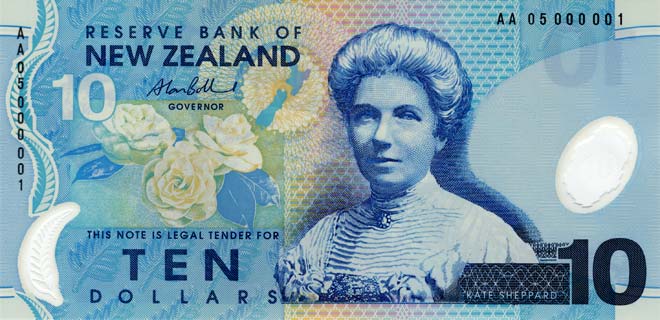Opinion by Chris Leitch, leader of Social Credit Party.
The Reserve Bank holds $55 billion in Government bonds (around half of the Government’s current borrowing) – It bought those bonds (IOU’s which represent previous government borrowing) from the country’s commercial banks, institutional investors, and managed funds (such as Kiwisaver) using a process termed Quantitative Easing – creating digital money.
If you think $55 billion is a lot, the Bank of England has so far bought £875 billion ($1727 billion) of British Government bonds through its QE programme.
Politicians and commentators here have said that money will need to be paid back.
Christopher Luxon, in an interview with Herald reporter Thomas Coughlan on November 30th said “every dollar we borrow fundamentally has to be paid back at some future time”.
Former National finance spokesman Andrew Bayly in the Budget debate on May 20th 2020 had this to say “Somewhere, sometime, someone is going to have to pay it off”. “The future generation, the young generation is going to have to pay it back for us”.
Jamie Gray (Herald business reporter) put it this way (28th January) “The Reserve Bank’s large-scale asset purchase programme (QE) is still debt – money that will need to be paid back further down the track”.
If they’re right, to whom is it owed?
Not to those commercial banks, institutional investors, and managed funds. The debt was purchased from them by the Reserve Bank so they’re out of the picture.
Perhaps to somebody the Reserve Bank borrowed the money from to purchase it off them?
No, it created digital money to do that.
This was confirmed by the Bank’s chief economist Yuong Ha in the Herald on August 14th last year “We create money … which is what central banks do, and have always done, but we then exchange it for assets [government bonds] and those sit on our balance sheet.”
Stuff senior business journalist Tom Pullar-Strecker is starting to get the picture. On October 1st he wrote “The first $19b or so of the bonds that the Reserve Bank bought are due to mature between 2023 and 2025, which means the Treasury will need to pay that much money to the Reserve Bank to repay their capital value during those years”.
So Treasury, one arm of the government, is going to use money that taxpayers expect will be going into hospitals, schools, public housing and infrastructure, to pay back the Reserve Bank, another arm of government.
It’s already doing that with the interest on the debt.
A reader familiar with Lewis Carroll’s ‘Through the Looking Glass’ would right now be thinking the Mad Hatter must have dreamt that up.
Worse still, Treasury might borrow money from those original commercial banks, institutional investors, and managed funds, incurring a long term debt to those entities, so it can pay back the debt it owes to the government owned Reserve Bank – debt the bank purchased from those entities using money created by it in the first place.
Seriously? Even the Mad Hatter couldn’t have come up with that!
And if you think it can’t get sillier, the commercial banks, who initially buy the government bonds and then on-sell some to other investors, use the same process the Reserve Bank did – creation of digital money – to buy them.
Crikey, we’re getting into real fairyland stuff now.
No, believe it or not, as the talented Mr Ripley used to say, it’s all true.
Surely you don’t still believe that commercial banks lend money people deposit with them do you – even to the government?
That myth was blown away years ago. The Bank of England quite clearly states in its publication ‘ Money creation in the modern economy’, that banks create the (digital) money they lend. It is not money people have deposited with them.
That view is confirmed by the German Central Bank, the Bank of Canada, rating agency Standard and Poor’s, and our own Reserve Bank, to name just a few.
That Mad Hatter repayment process could proceed of course (without the Treasury borrowing to effect payment) because when Treasury pays off the bonds, that repayment (and the interest paid) will result in the Reserve Bank making a profit – which it pays out to the government.
A perfect circular economy, except along the way it’s provided a nice little earner for the banks and other ticket clippers, and been a significant driver of the insane rise in house prices.
Or the debt could simply be written off.
Ananish Chaudhuri, professor of behavioural and experimental economics at the University of Auckland worries about that. “Any hint of default or not honouring debt obligations will lead to long-term damage to a government’s reputation and its future ability to borrow”.
Apparently, taking money out of your savings account to buy something and not paying it back is ‘default or not honouring debt obligations’.
Give me a break!
It have been more efficient, less costly, and less damaging to the economy if the government had simply asked the Reserve Bank to credit its account (which is at the Reserve Bank) with $55 billion. It didn’t need to borrow.
But that would have left the ticket clippers most unhappy.
They’re expecting to continue their nice little earn on the $20b of bonds the government expects to issue next year.








